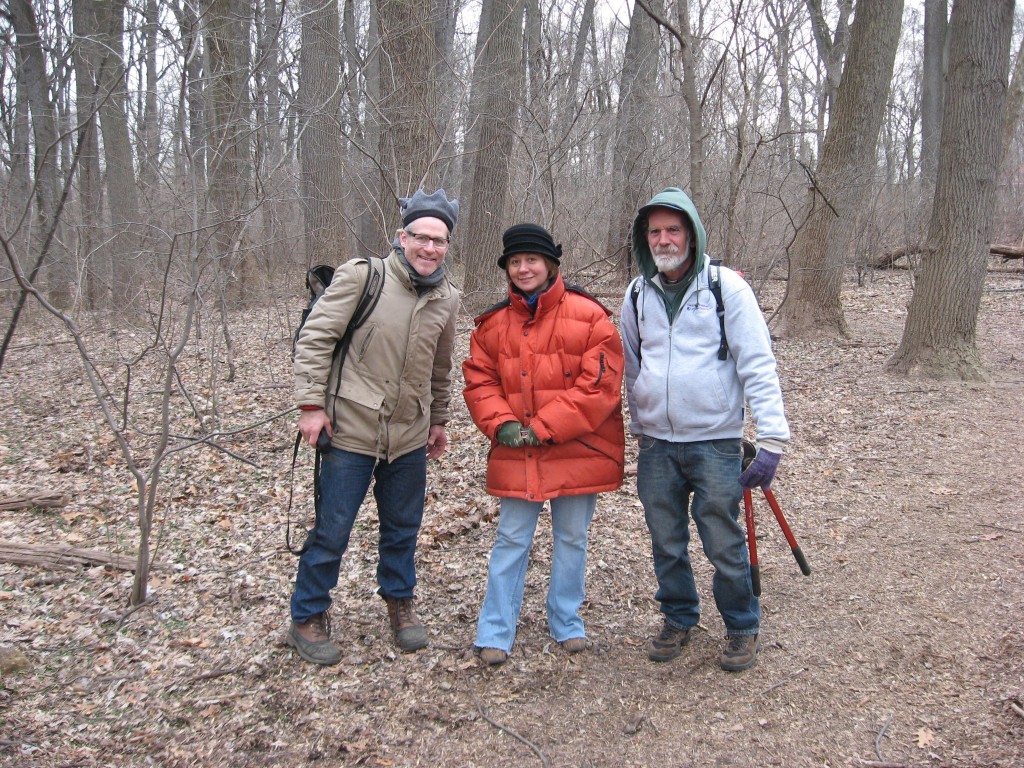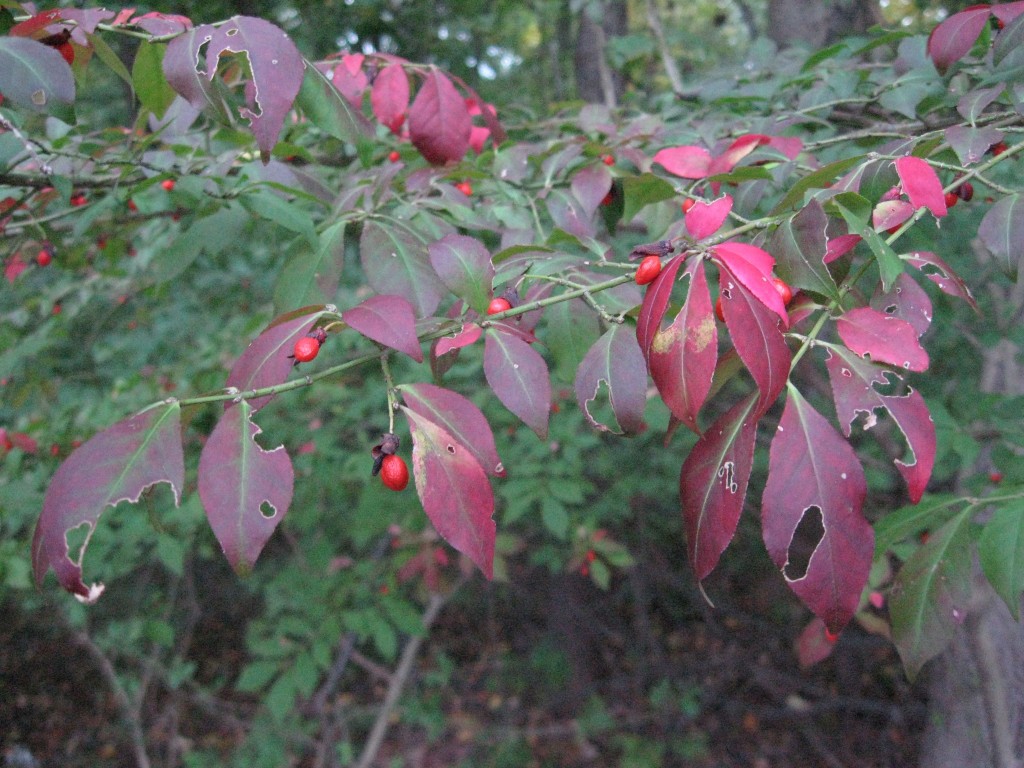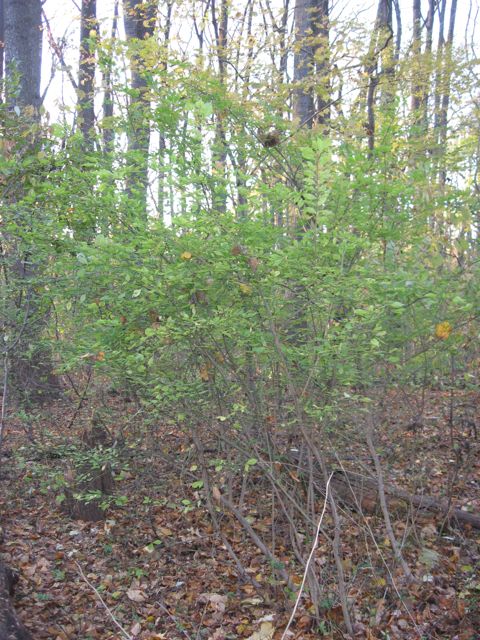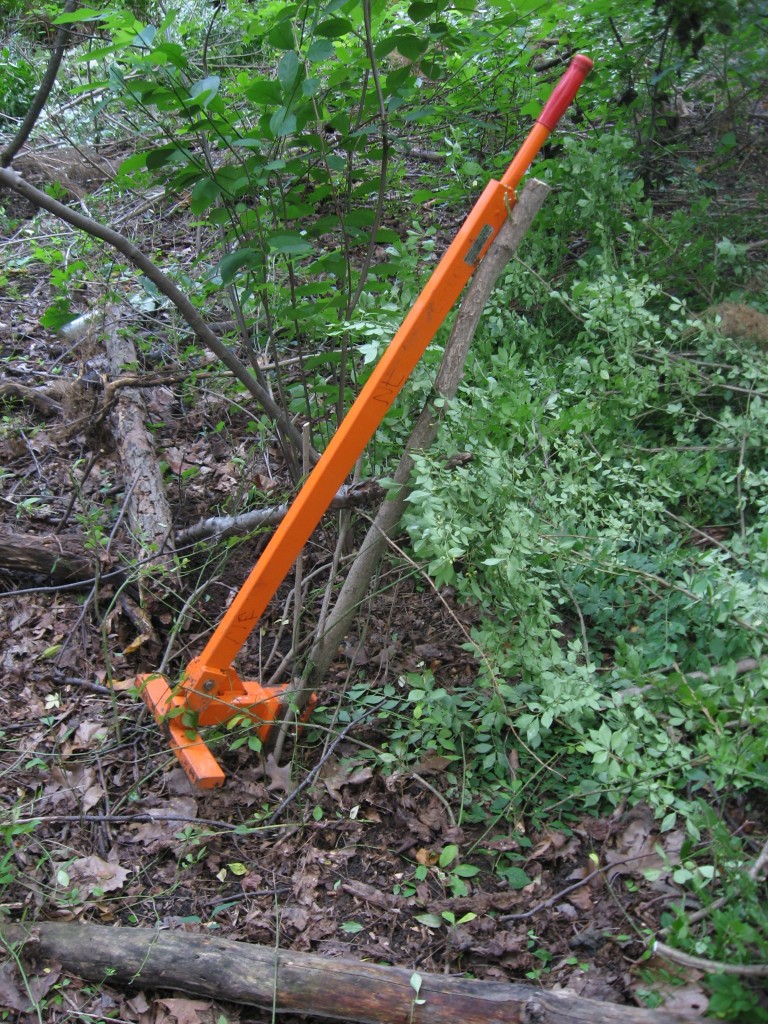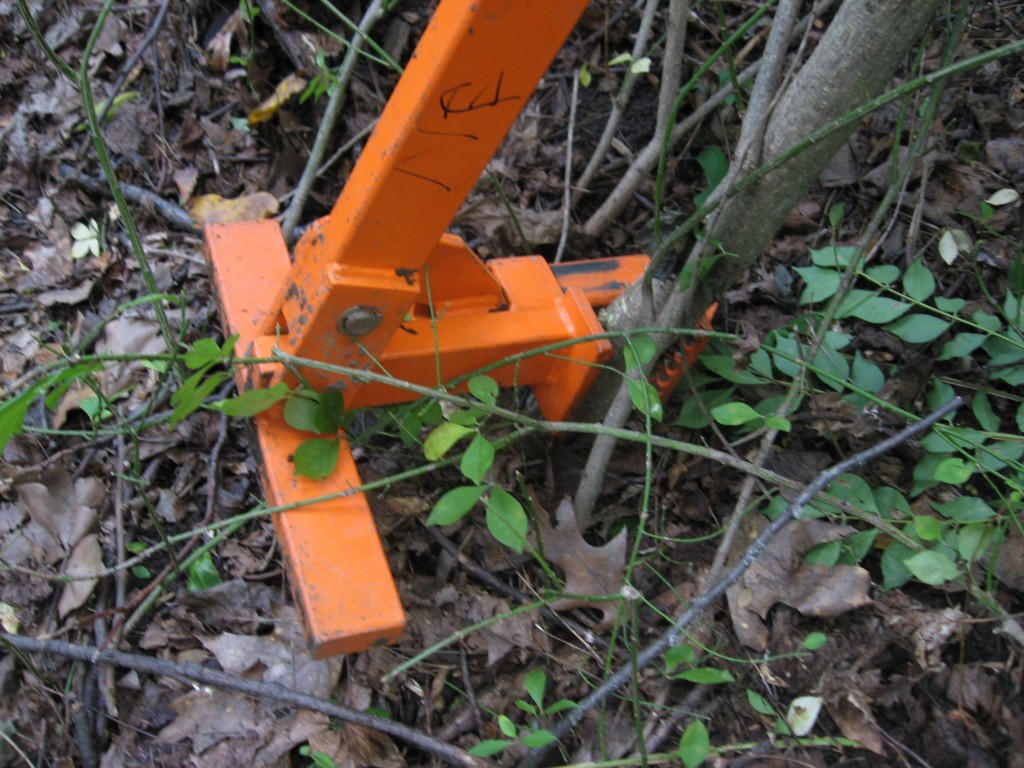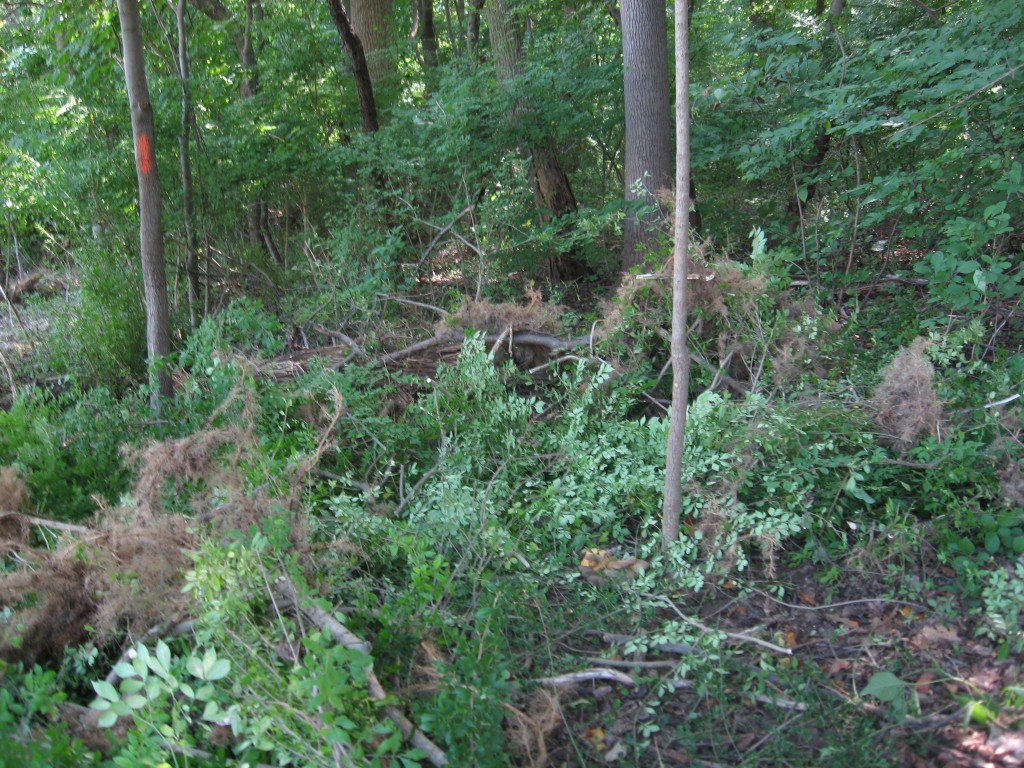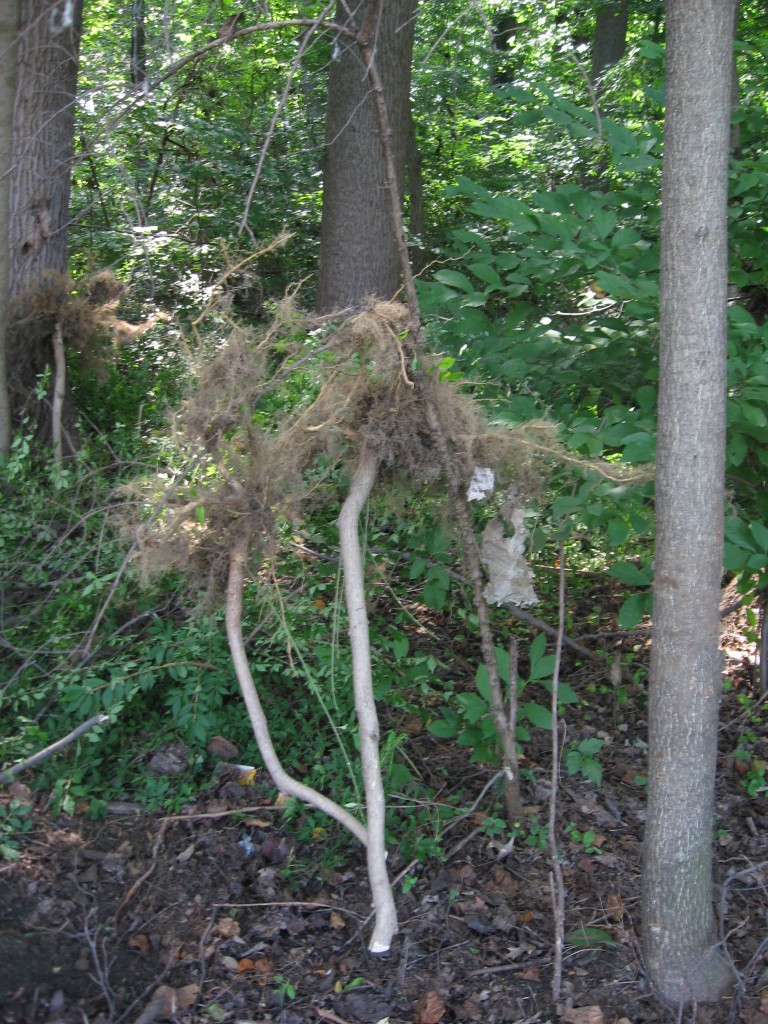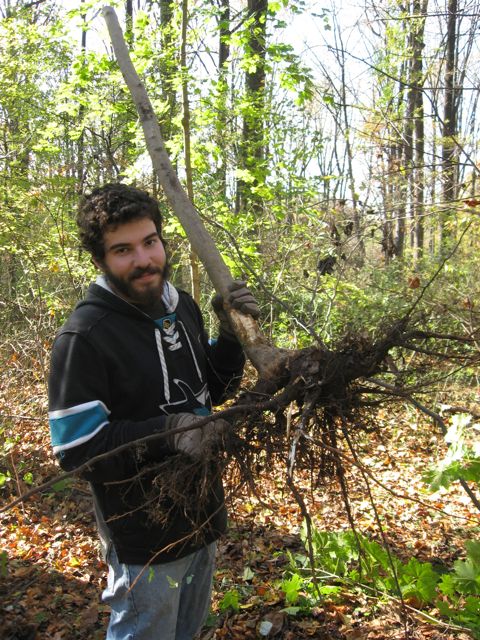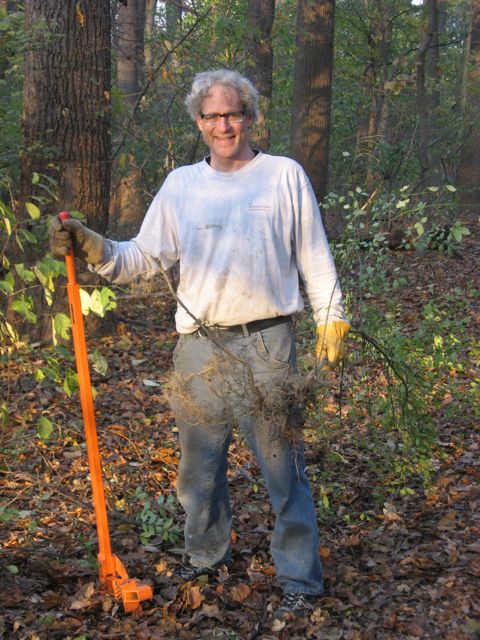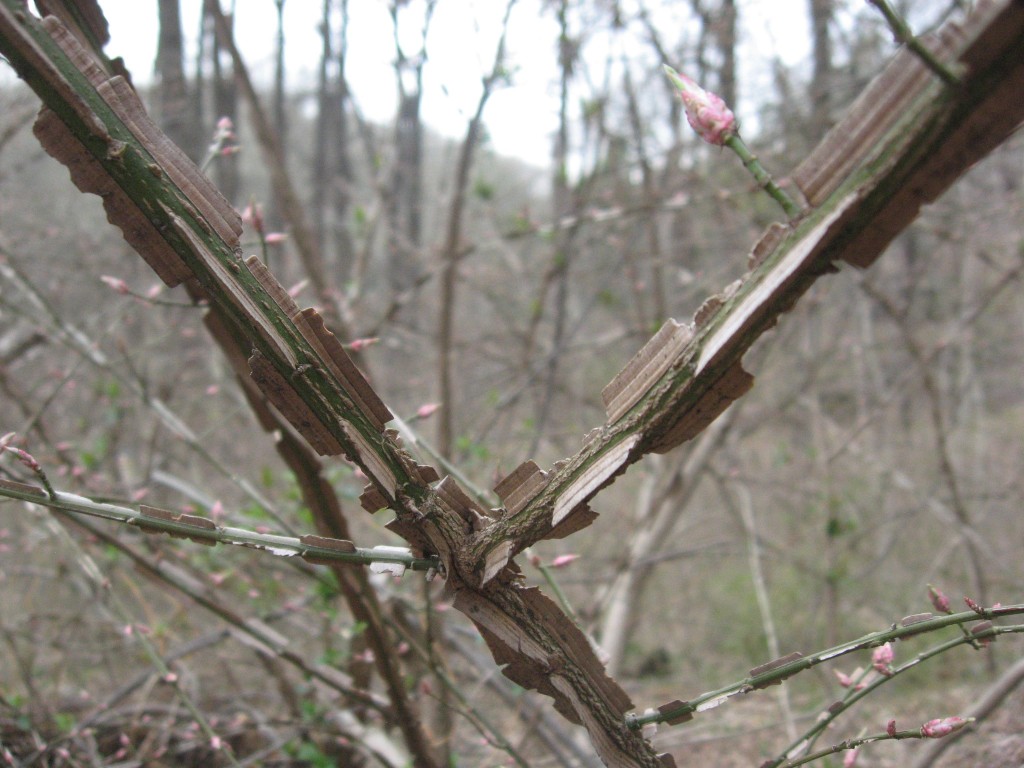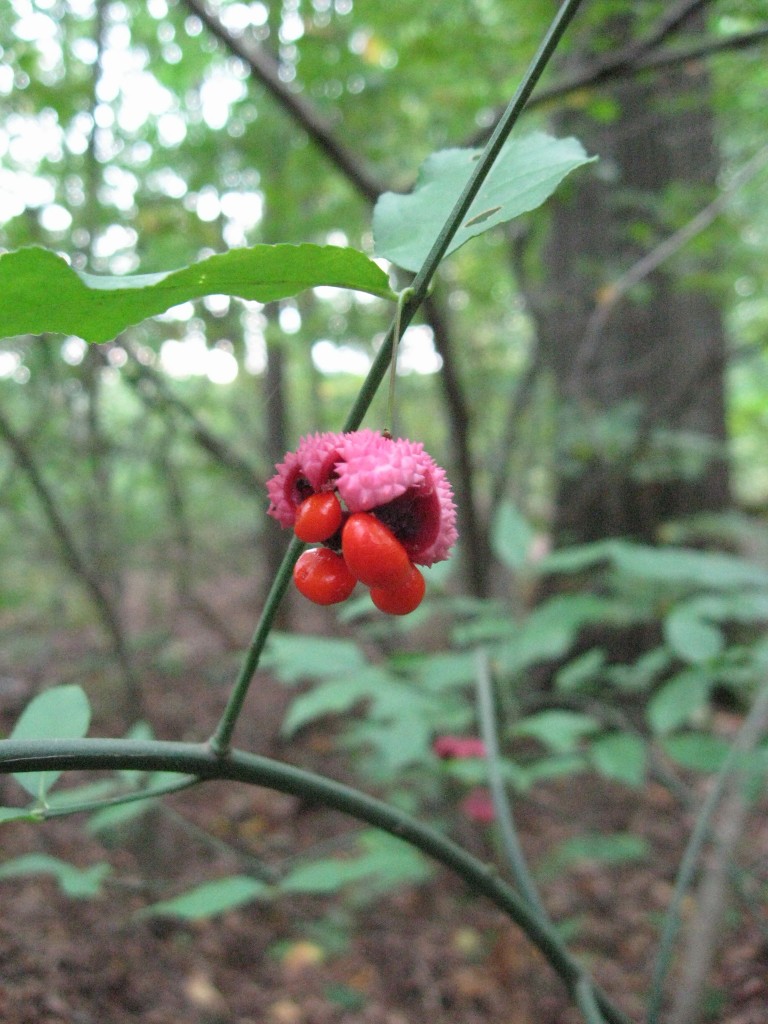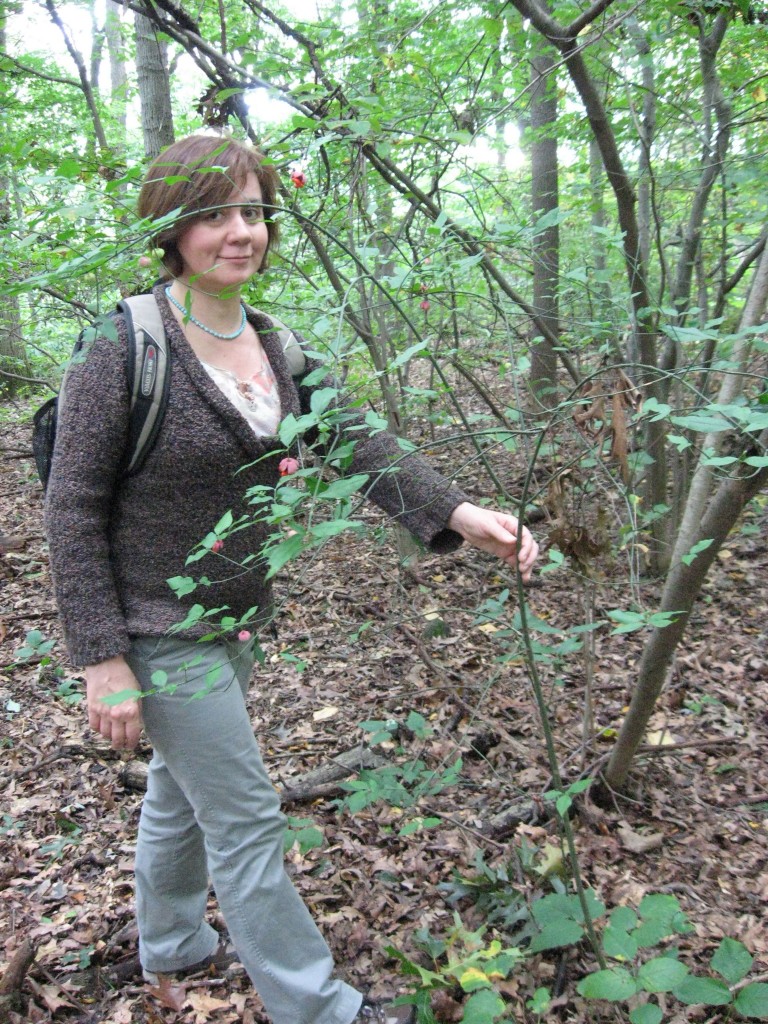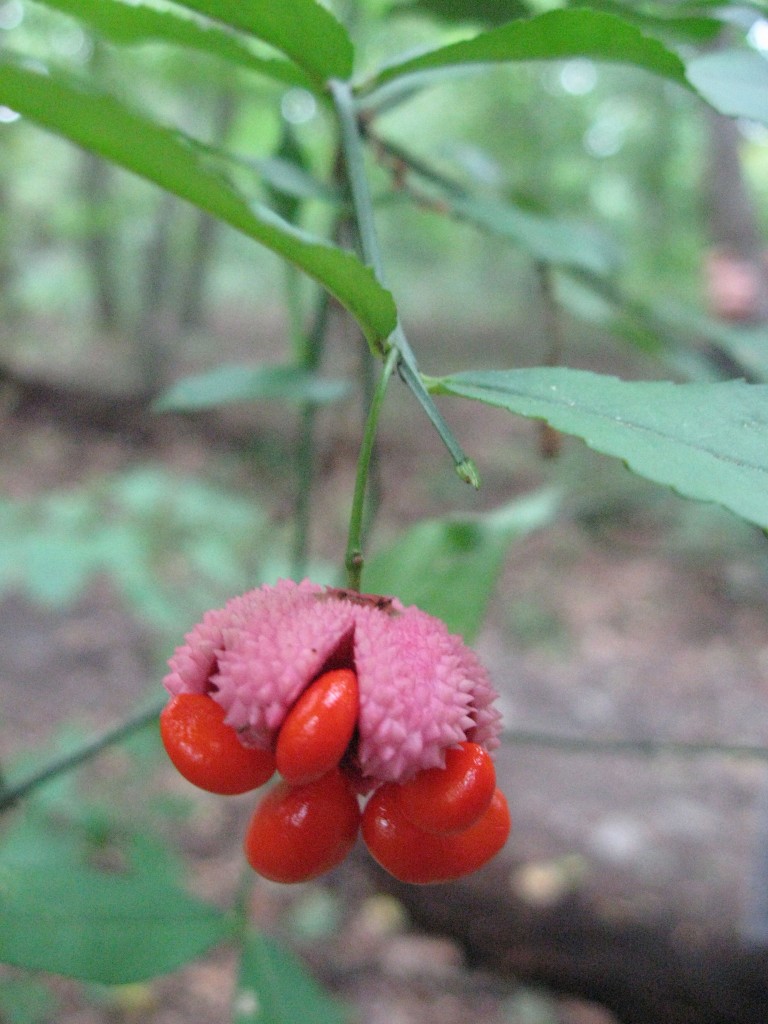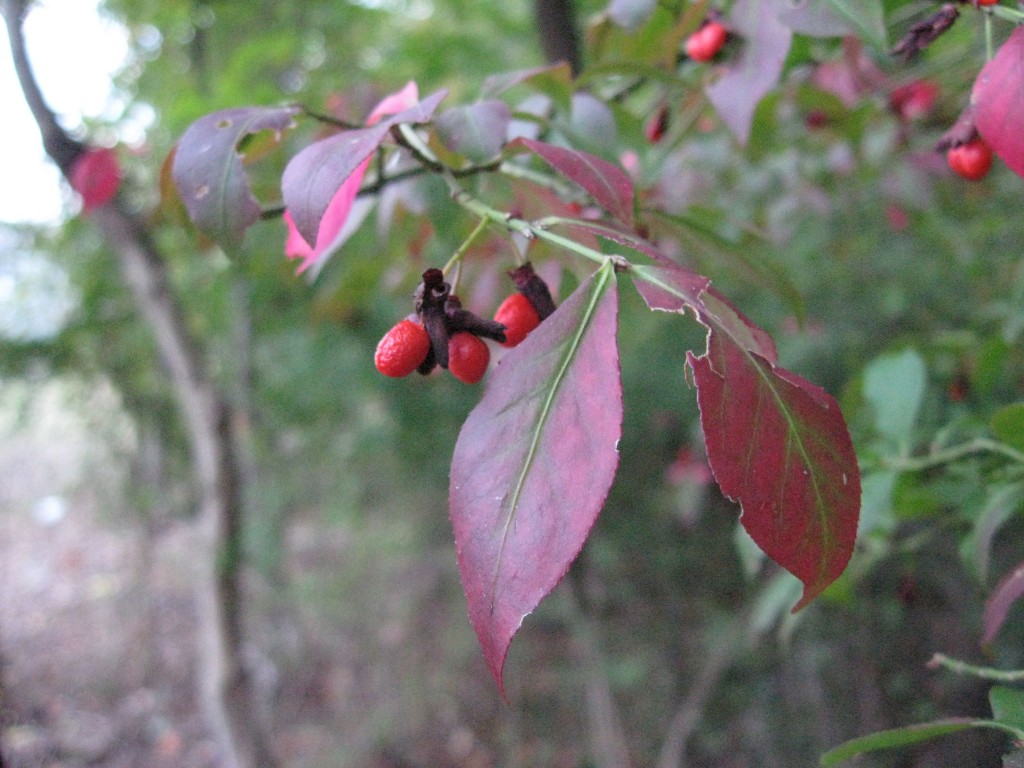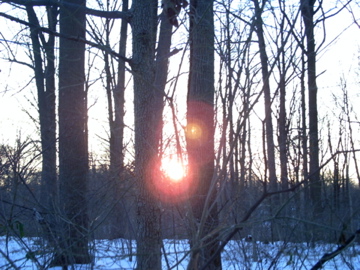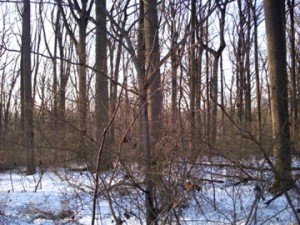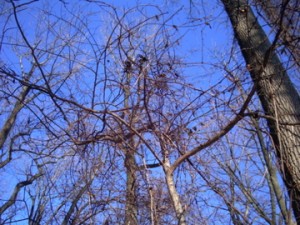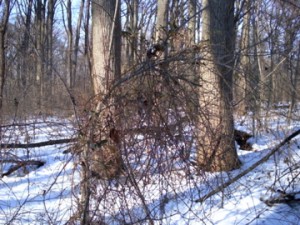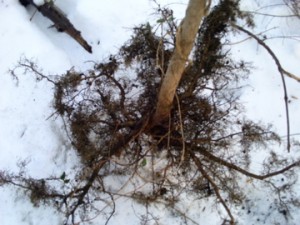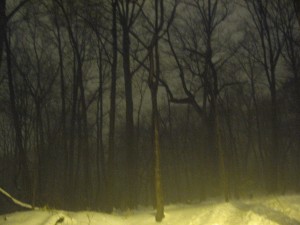What has become a tradition, every February, on the week of Presidents Day, The Philadelphia Parks and Rec staff and the volunteers of the Sanguine Root collaborate on a very focused task of eradicating the invasive Japanese Angelica tree from Morris Park. All year long, us volunteers pluck the tiny seedlings and saplings from the soil, numbering in the thousands. It is an ongoing effort to deplete the seedbank which has been replenished year after year by flowering and fruiting mature specimens that create complex and intensive root systems. These mature specimens require herbicide as a control, even as we remove as much as we can by hand -pulling, there is still that bigger problem.
This species is aggressively appropriating habitat all across Philadelphia at an alarming rate. If an area of forest experiences canopy failure from the results of other invasives, the Angelica tree is one of the first on the scene. Â In forests where oak trees would normally drop their acorns and grow new trees, and a wide variety of shrubs would grow, now grows this monoculture of invasive trees, shading out all of the indigenous forest understory shrubs and herbaceous plants, and most disturbingly, the young trees, the saplings and seedlings are missing entirely under the darkness of this invasive Asian tree. The future of the forests of Fairmount Park are being threatened by this species.
It has become an effort to save the  urban forest, because every effort to help young trees germinate and grow is worthwhile, and this is an obvious one considering the proliferation of this noxious species throughout the Parks of Philadelphia.
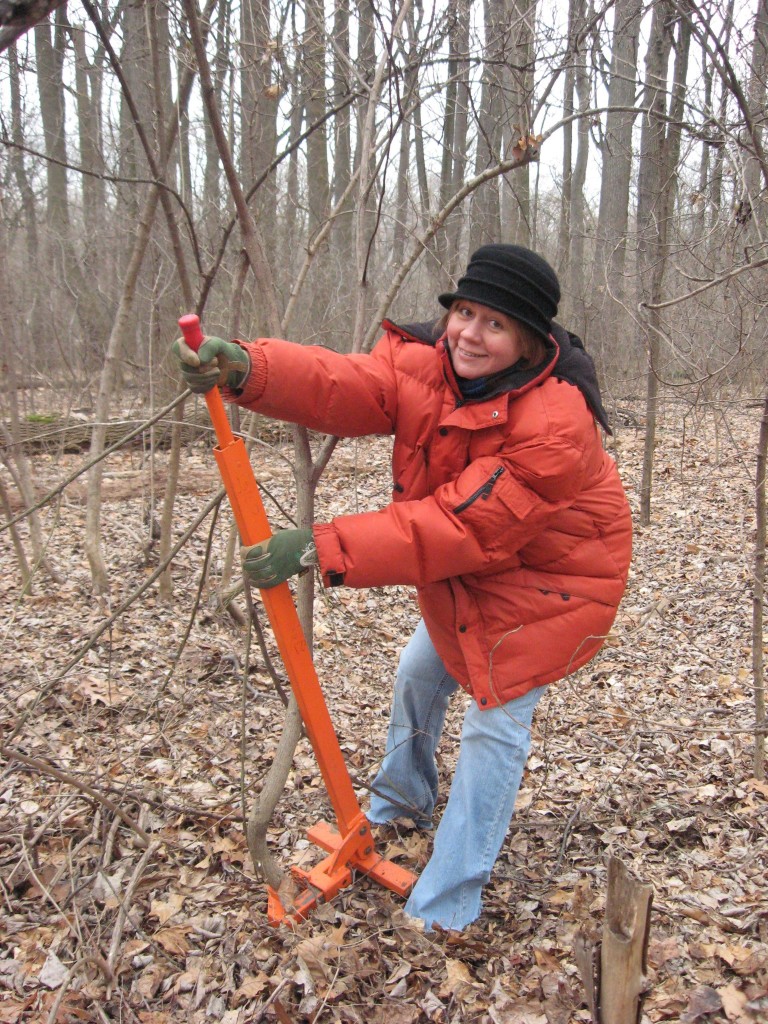
Several years ago, we were tasked by the City of Philadelphia Parks and Rec to map out the populations of the Japanese Angelica tree (Aralia elata) so we could then use the map to determine a course of action for their eradication. Â Using the map we created, we were then able to create a strategic plan of eradication sites, which we have been doing since 2011.
We have a pretty good knowledge of all the populations in Morris Park, and we acted as guides for our staff partners at Parks and Rec, who are equipped with Garlon 4 Â ultra herbicide, loaded in tanks they carry on their backs. Â We showed them the infestations of mature, flowering specimens and stayed out of the way , removing another invasive, the Burning bush (euonymous alatus) with a Parks and Rec supplied weed wrench as they sprayed the Japanese Angelica trees with a basal bark herbicide application.
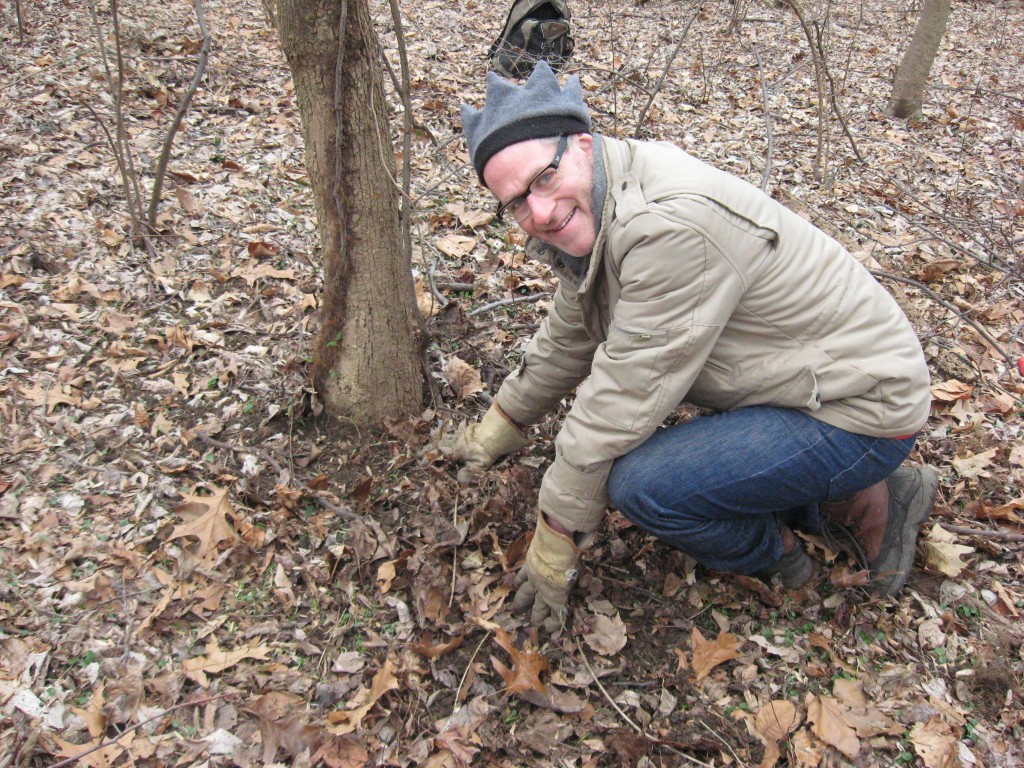
Our Burning Bush removal operation proceeds as follows: we pull out the bush and leave it on site, roots out of the ground where it will die in a few weeks and decompose back into the earth within five years. The disturbance from pulling the bush out of the soil becomes the next issue of concern. We sometimes find other plants attached to the extricated shrub, such as Mayapple and on this day we found the Spring Beauty (Claytonia virginica) an ephemeral Spring flower that grows out of a corm.
Pictured above, Â Sanguine Root volunteer Sean Solomon has just replanted roots of Spring Beauty and Mayapple that were uprooted along with the invasive shrub, Burning Bush. The soil is put back and the leaf cover is replaced as if there was never a problem.
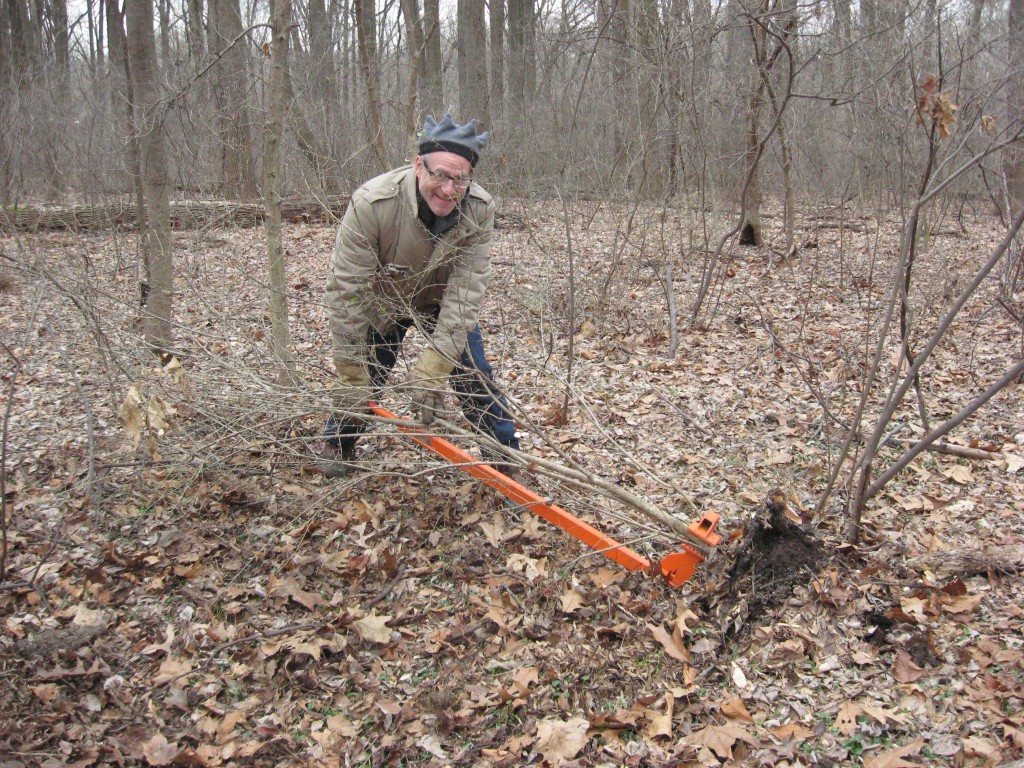
Hopefully our efforts at removing these invasive shrubs  will result in the germination and sprouting of native canopy trees. We have had success with this phenomenon occurring in several other sites in Morris Park where we have removed invasives.
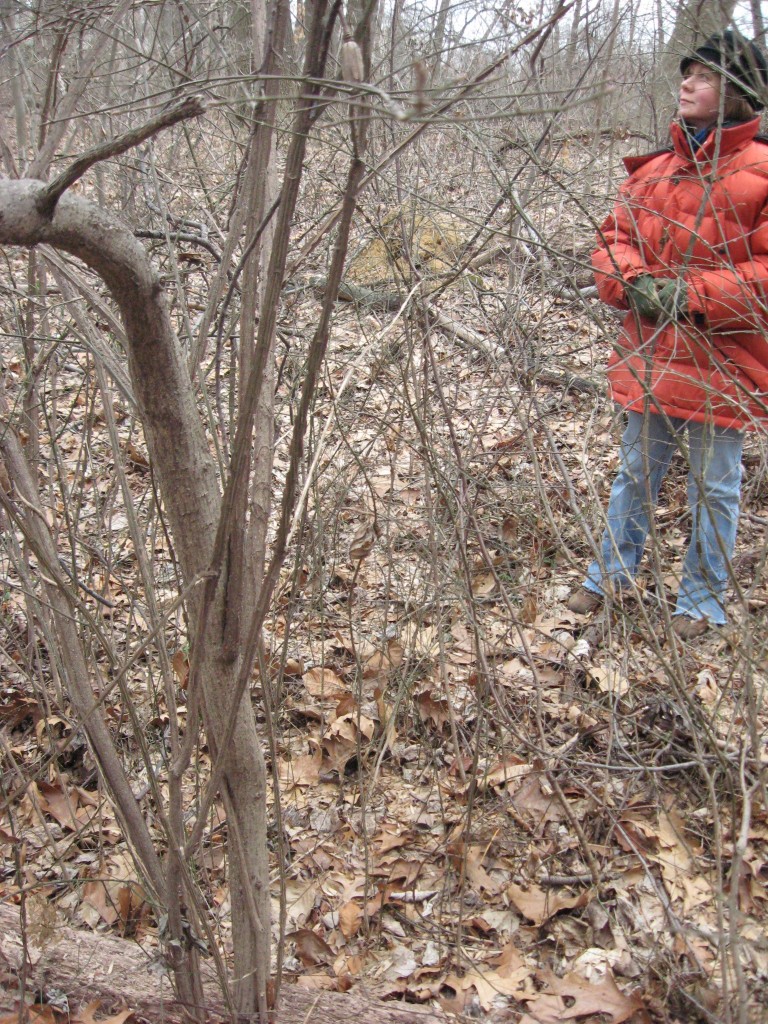
Above is an infestation of the invasive Burning Bush. Underneath the large stems were hundreds of seedlings that we pulled out by hand. The largest stem was then cut and Parks and Rec environmental technician Luke Rhodes carefully applied herbicide on the cut stump.
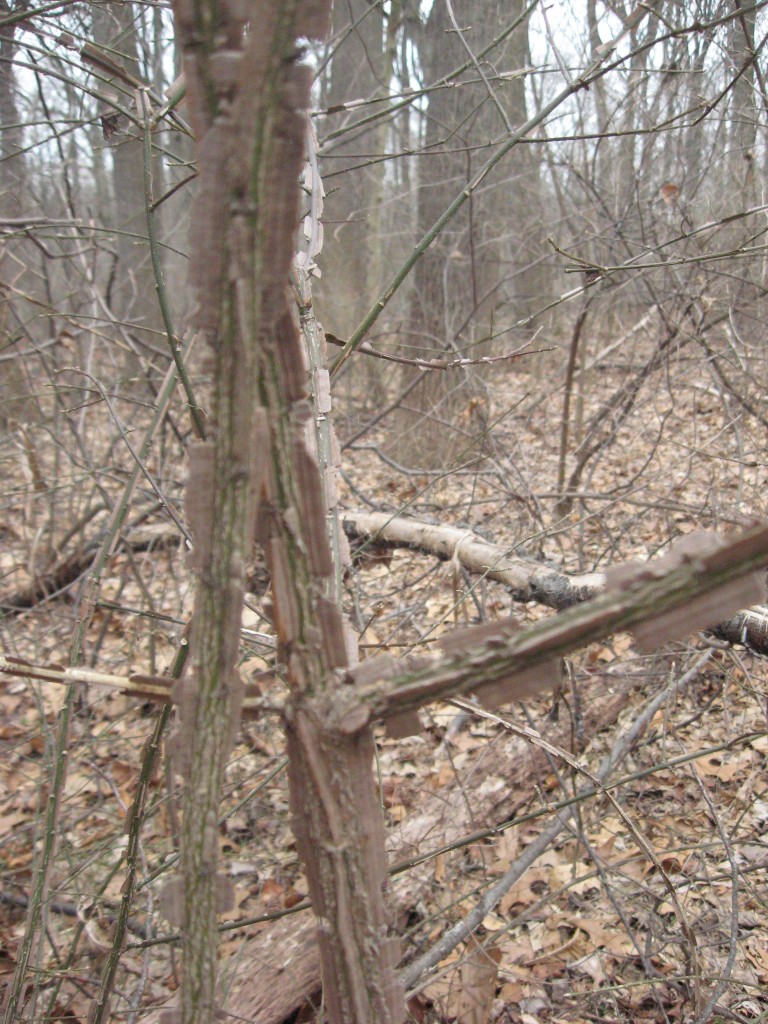
Above, the stems and corky wings of the Burning Bush.
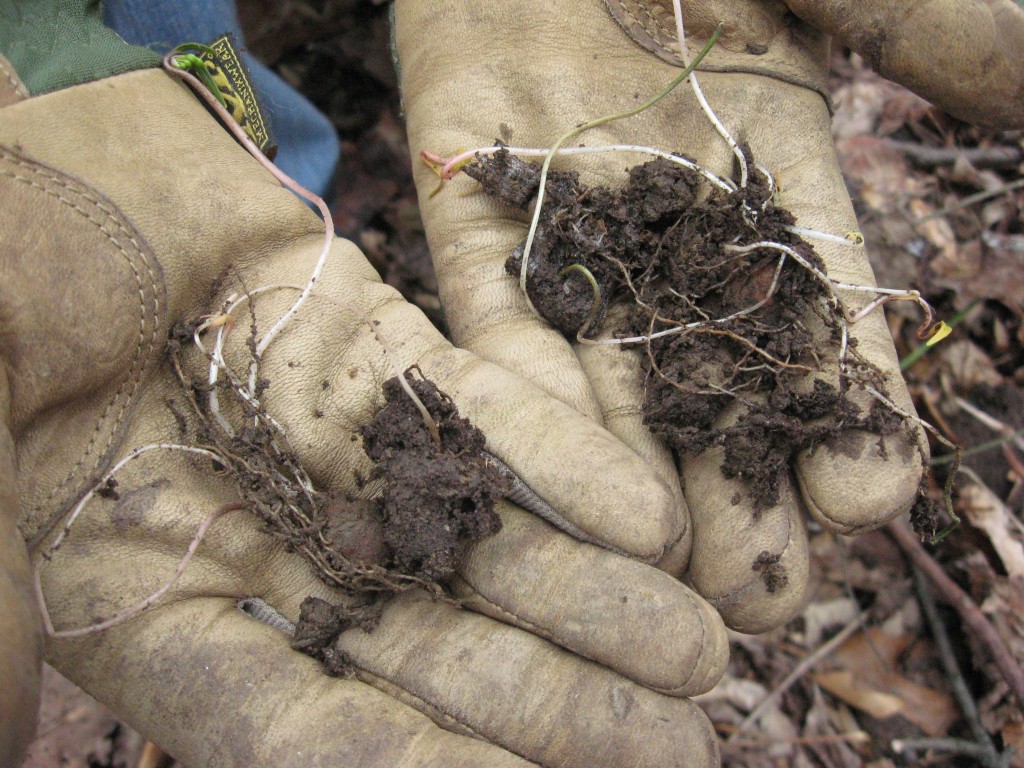
Above, these are the specimens of the native spring wildflower Claytonia virginica, the Spring Beauty, we  found in the uprooted Burning bush.
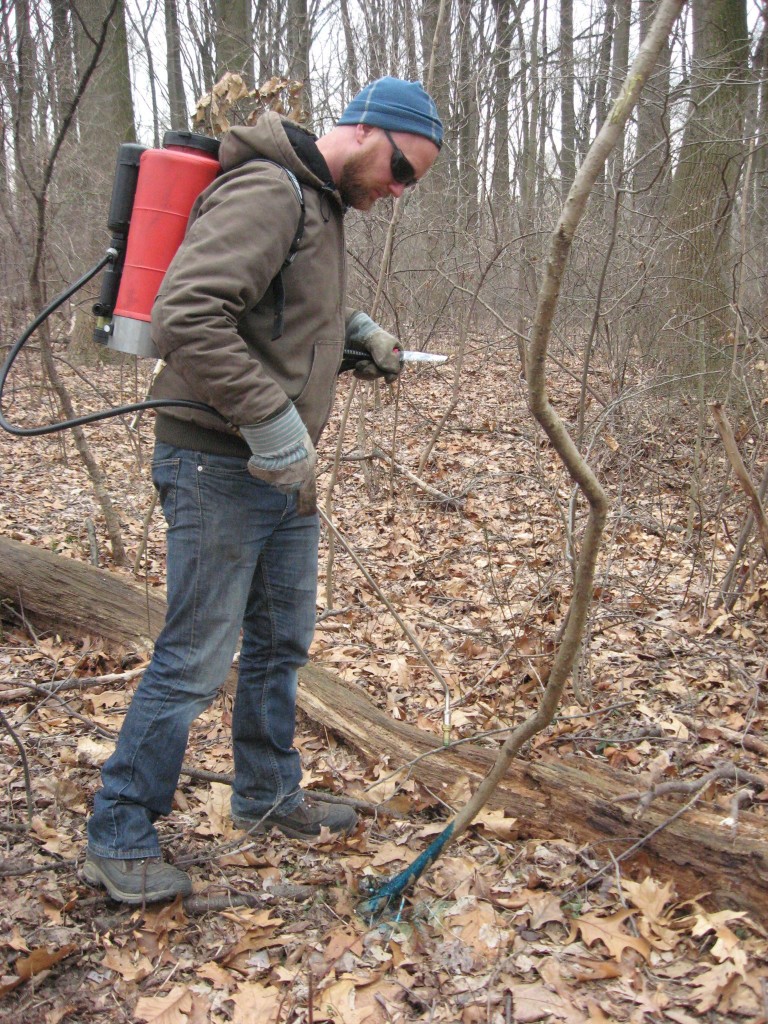
Luke applies a basal bark application of herbicide to the Japanese Angelica tree.
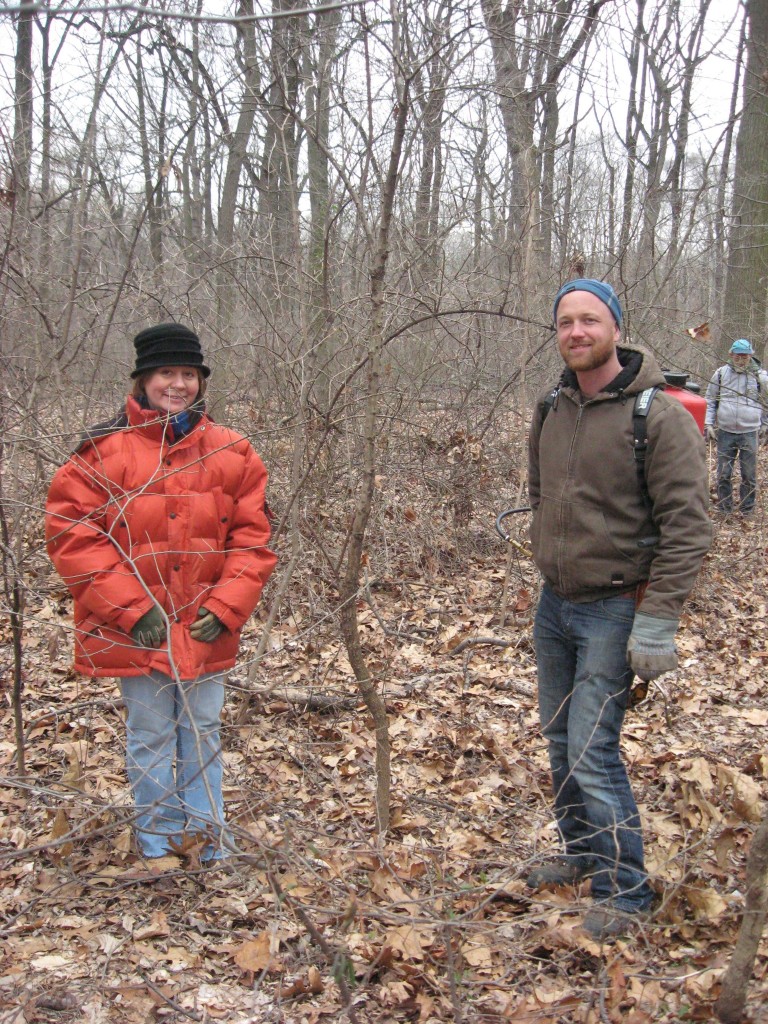
A Black-Haw Viburnum shrub was discovered in our work area. Finding this native shrub was an exciting moment in our day.
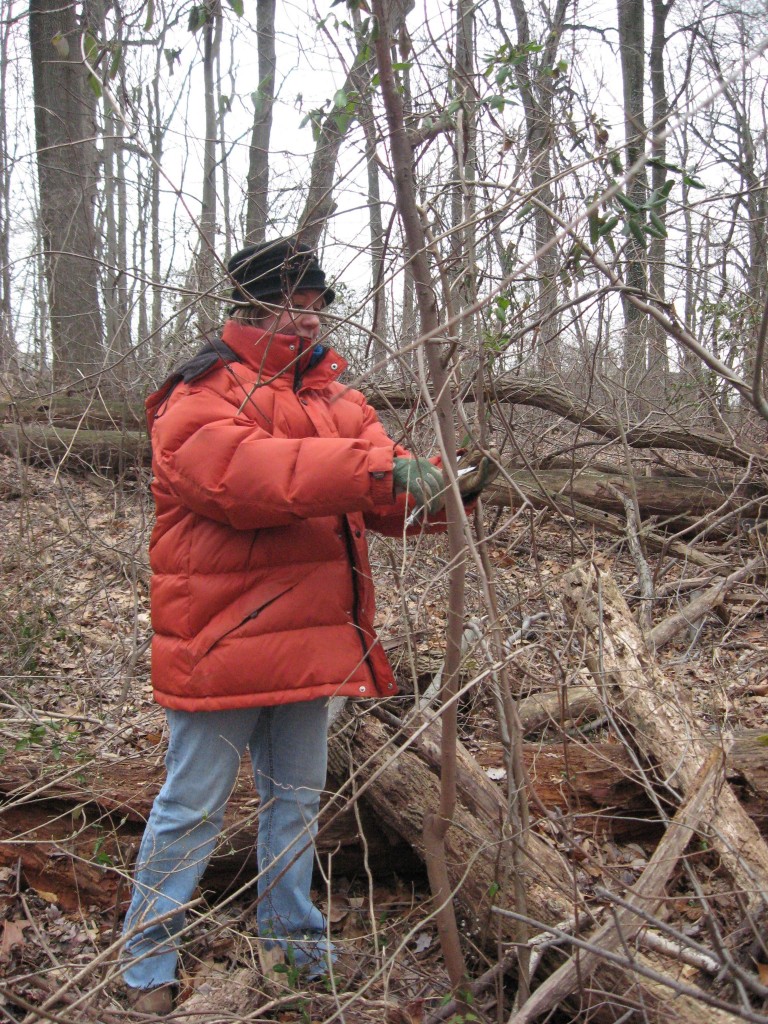
Sanguine Root Volunteer Isabelle Dijols cuts the noxious invasive Japanese Honeysuckle off of the young trees.
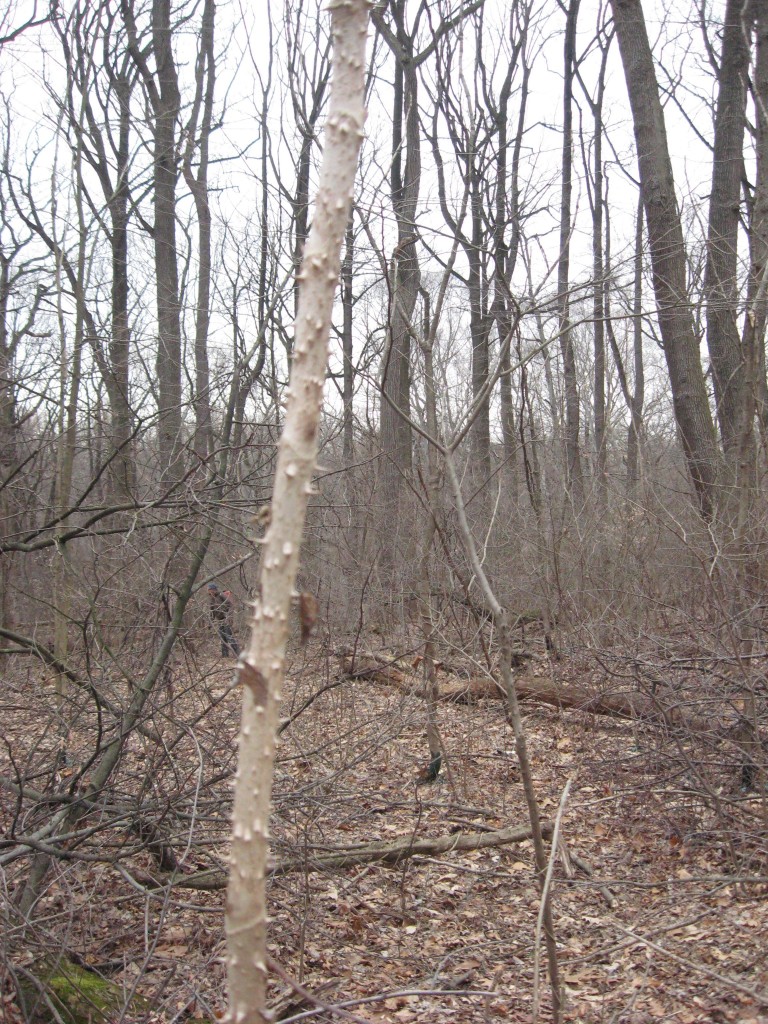
Above, the  invasive Japanese Angelica Tree, in the foreground. For a great introductory essay on this subject with references, please see our post The Japanese Angelica Tree Rapidly Invades Morris Park. Click here For photos of  blooming flowers and a photographic guide describing the botanical differences between the North American native Devils Walking Stick (Aralia spinosa) and the Japanese Angelica tree.
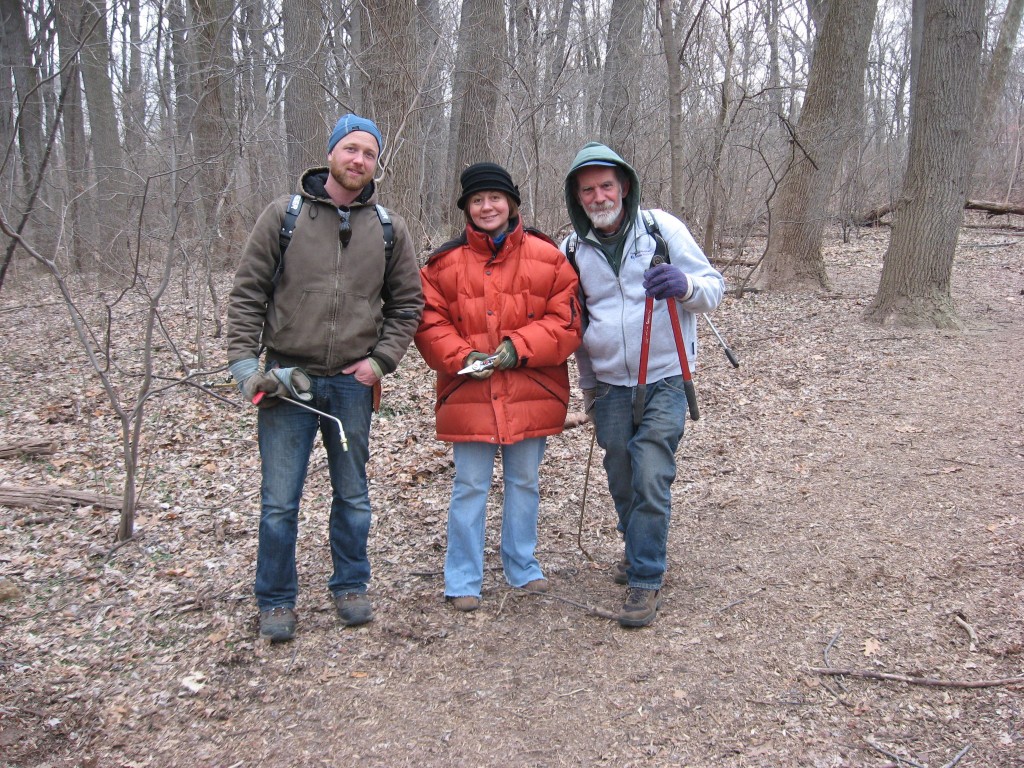
Luke, Rhodes, Isabelle Dijols, and Tom Dougherty, and below with Sean Solomon, Isabelle and Tom.
Going out and removing invasives is a great way to get exercise and be outdoors all the while accomplishing something of great environmental value and community service!
